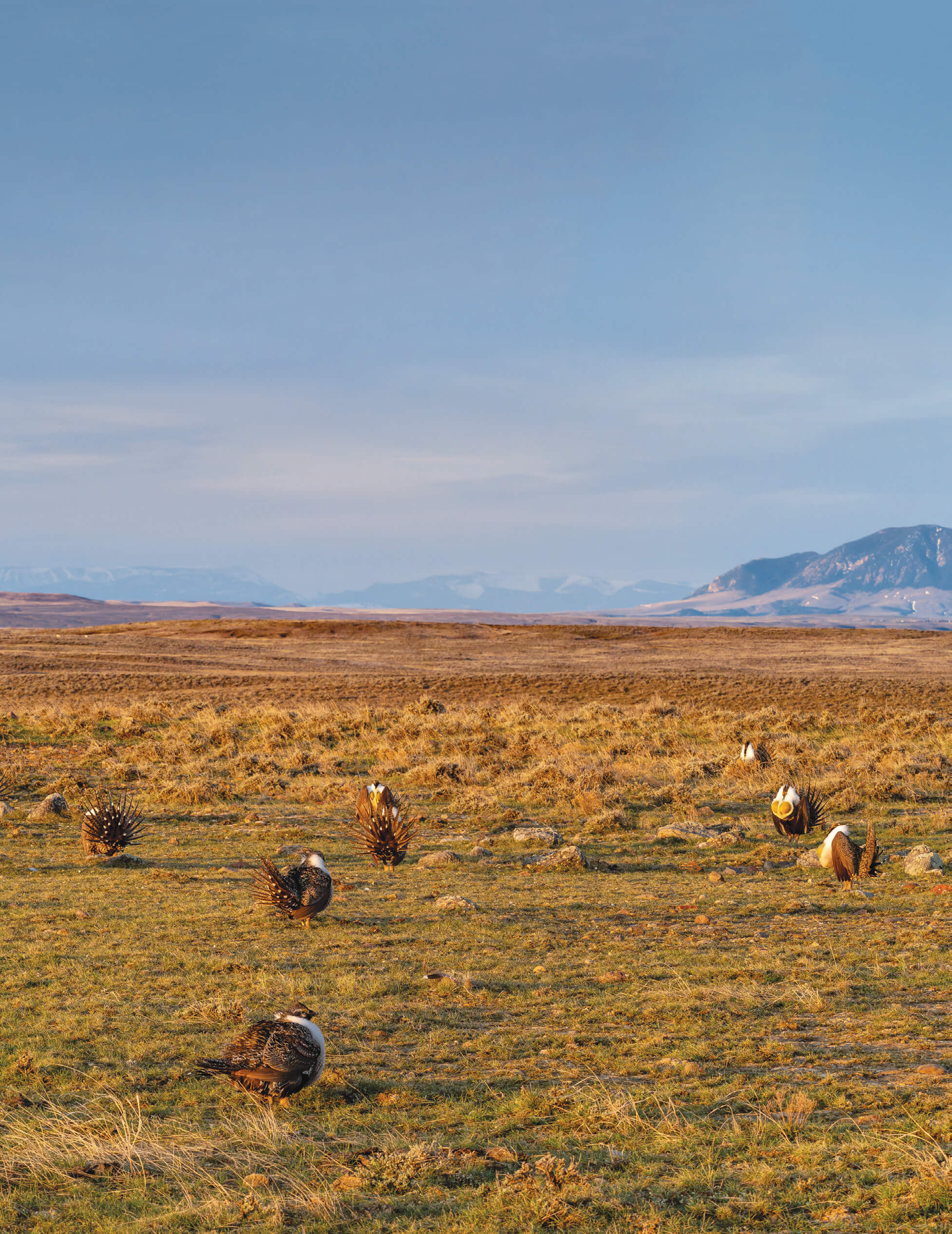
25 Sep West Wing
We should bother with keeping sage grouse in the West because they are a measure of how the environment is doing,” says Martin Townsend, the conservation director for the Ranchers Stewardship Alliance. “If sage grouse go downhill, we have a large-scale problem.”
Less than a dozen western states host the greater sage grouse, the largest grouse in North America. And three of those states are making huge gains for grouse by focusing on the return of natural elements to the sagebrush steppe ecosystem.
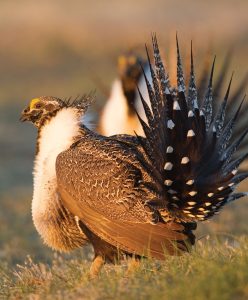
Greater sage grouse, the largest grouse in North America, strut in the spring to attract mates. | DON JONES
Idaho
The winds are low as flames rise high above open rangeland in Owyhee County, Idaho. There’s a fire crew watching the blaze. They don’t look worried. They look confident. They started the fire on purpose.
“The burn day is fun,” says Connor White, the Pheasants Forever Bruneau-Owyhee sage grouse habitat project coordinator. “When we’re burning juniper, honestly, it smells a lot like a campfire. You go hit it with the drip torch, and if the needles are still on it, it doesn’t take a whole lot for it to burn.”
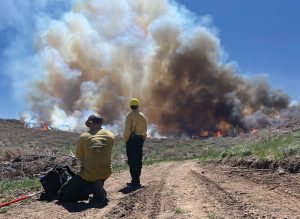
Planned, prescribed burns are taking place across the West to reduce encroaching conifers and give sagebrush more room to sprawl as cover and food for sage grouse. | TIGHT LINE MEDIA/KRIS MILLGATE
Junipers are native, but not in the quantity displayed across the West today. That’s the result of suppressing wildfires for a century. The common desert conifer has expanded by 600 percent in recent decades. The trees are encroaching on sagebrush. Sage grouse need sagebrush in every season and through all stages of life, but the sagebrush canopy is shrinking. The goal of cutting and burning the advancing junipers is to return balance to the landscape. In White’s territory near the Idaho-Oregon border, crews target 30,000 acres annually. They upped that ante in a major way in 2024, targeting more than 63,000 acres.
“You can’t really do a whole lot of rangeland management without also having sage grouse be involved in some form or fashion, so what I get to do for habitat restoration also benefits sage grouse,” White says. “To really affect landscape at the scale that we need to, we always like to say we need to go from horizon to horizon.”
Montana
Water, rather than fire, is the focus in Montana. That’s where a concept that’s helping ranchers is also helping grouse.
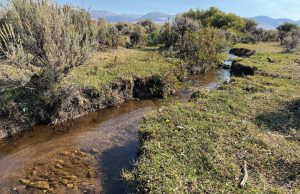
Creeks and seeps supply the dry, high desert with enough moisture to cultivate grasses and bugs along banks for sage grouse to eat. | TIGHT LINE MEDIA/KRIS MILLGATE
Cows and birds need water, and they have it at Fox Ranch in Phillips County. A small, skinny creek called Little Jewel Creek runs through the ranch. It has a few trees nearby. When two beavers gnawed down some of those trees, ranch owner Brian Fox had the eager animals trapped. He got rid of the chewers, but he lost the creek, too.
“Later that year, the creek was going dry, and my cows were struggling,” says Fox. “I drilled a well to solve the water situation.”
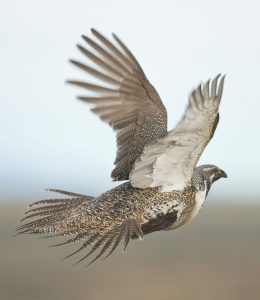
Sage grouse are an upland bird species similar in size to chickens. | DON JONES
While this fixed the problem, it was an expensive solution that could have been avoided in the first place: Fox is quick to explain that he’d had water when he had beavers because they backed up the flow with dams. When they were gone, so was the water. “I wish I’d never trapped those beavers,” he says. “It’s my own fault. Trapping them wasn’t the smartest thing to do.”
Fox realized an alternative to drilling his well a few years later when he learned about BDAs, or beaver-dam analogs. (Turn to page 144 to learn more about how Fox’s efforts are improving his approach to ranching). These are dams made of natural materials, like wood and willow, but animals do not make them: They’re built by humans. Fox maintains and adds BDAs on his property every year through the U.S. Army Corps of Engineers’ permitting process, plus labor and funding provided by conservation organizations. And it’s working well enough that other ranchers are noticing.
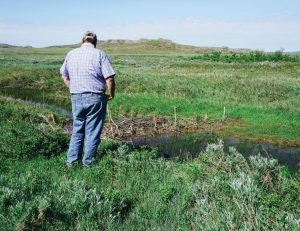
Montana rancher Brian Fox builds beaver-dam analogs on his property to hold water for cattle, which also promote food and water for sage grouse. | RANCHERS STEWARDSHIP ALLIANCE/HAYLIE SHIPP
“It’s one of the longest BDA experiments we’ve had in this area,” Fox says. “Water stays longer. Grass is greener longer. My cows graze more efficiently. It created a heck of a good habitat for sage grouse and waterfowl.”
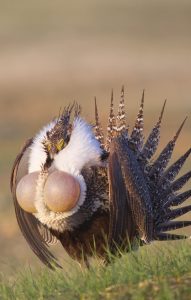
Male sage grouse inflate air sacks on their chests during mating season. The sacks are not obvious during other parts of the year. | DON JONES
When scientists installed BDAs in Oregon to connect waterways for steelhead and salmon, they noticed the grass around the structures attracted sage hens with chicks needing new green plant matter for their own growth. The combination of grass and water also attracts bugs, the protein birds need. Wherever water holds in dry regions, you’ll find birds.
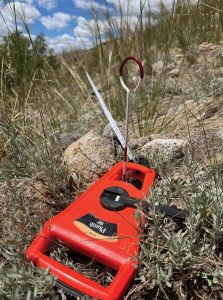
Researchers grid a hillside in Sublette County, Wyoming to monitor the presence of invasive cheatgrass. | RANCHERS STEWARDSHIP ALLIANCE/HAYLIE SHIPP
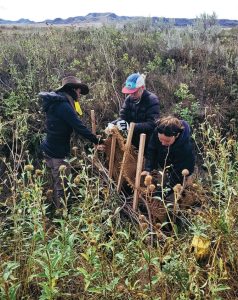
A crew builds a beaver-dam analog on a Montana ranch to retain water across an arid landscape. | BRIAN FOX
“Sage grouse were low priority when I bought the place in 2012. As I started these BDAs and began listening to other people talk about how sage grouse are struggling, I started to pay attention to them more,” Fox says. “I realize these BDAs are helping them drastically. They’re rebounding. They’re a higher priority for my operation now.”
Wyoming
Sage grouse are high on the priority list in Wyoming, too. Statistics show more than 40 percent of the sage grouse left in the world live in the Cowboy State, with 40 percent of those birds residing in Sublette County. That’s where Julie Kraft works.
“We’re trying to do everything we can to keep sage grouse off the Endangered Species List,” says Kraft, Sublette County weed and pest supervisor. “Because sagebrush is so important to our wildlife and to our economy, cheatgrass is by far the biggest threat.”
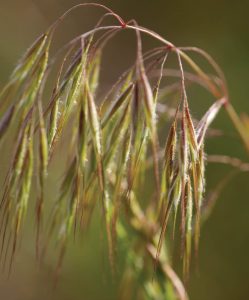
Cheatgrass is an invasive weed that’s quick to sprout and take over after fire, preventing native plants like sagebrush from recovering. | ADOBE STOCK/MONIKA
The county started spraying invasive cheatgrass in 2012. A helicopter applies an herbicide that prohibits cheatgrass seedlings from sprouting, but native plants can still push through.
“Most of the cheatgrass seed that is introduced in the system will germinate in the first five years,” Kraft says. “If we can have success in the past five years, there might not be any more residual seed there. We’re winning the game at that point.”
The successful effort has grown from treating a few hundred acres a year to treating tens of thousands annually. The result of the $6 million program to spray 97,000 acres is a county that is nearly 100 percent free of cheatgrass.
“It’s incredibly rewarding to come out and see huge ridges without any cheatgrass,” Kraft says. “And it’s success that’s long-term. It’s not just a couple of years.”
Emmy-winning journalist Kris Millgate is based in Idaho, where she runs trail, chases trout, and stalks birds. Her new wildlife film, Sage Wisdom West, premieres in spring 2026. Read and watch her work at tightlinemedia.com.



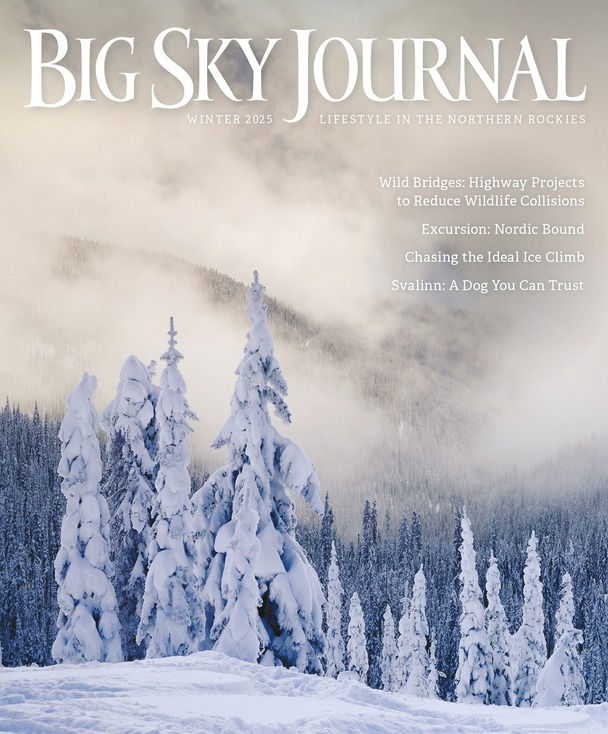
No Comments